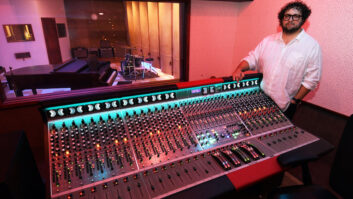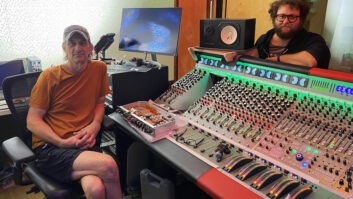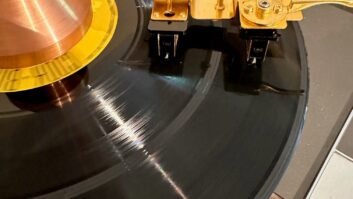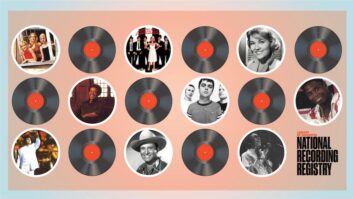Nestled on the edge of the Phoenix Mountain Preserve, Kyle W.Harris’ project studio, PlayR Recording, has been up and running invarious incarnations since 1992. By combining the best of analogand digital technologies with a passion for acoustic music, Harrishas found his niche as an engineer and producer, representingartists who could best be characterized by the Americana/folk musicgenre.
Working in Phoenix as a bass player since the ’70s, Harris beganplaying sessions in the 1980s and became hooked on the recordingprocess. One of his first clients after opening the doors at PlayRwas Irish recording artist Matt Manning, who was accompanied byfamed Irish music producer (and author) P.J. Curtis. According toHarris, “Everything I know about making a record is thanks toP.J. Curtis, an artist in the true sense of the word. He taught meto value performance more than perfection and to give the artistthe most comfortable space possible to create in.”
The heart of PlayR’s sound is a strong analog front end thatstarts with a matched pair of Lawson L47 tube microphones, a pairof Avalon VT-737 mic pre/compressor/EQs, and a Trident Model 2424-channel, 24-bus console. “My goal from the beginning hasbeen to assemble gear with analog warmth and accuracy on the frontend and to combine it with the ease and convenience of digitalmixing and editing,” says Harris.
After trying several different DAW configurations, Harrisinstalled E-mu/Ensoniq’s PARIS (with 16 channels of 24-bit A/D)saying, “The PARIS converters are the reason to go to PARIS.It sounds more like analog tape than any other DAW I’ve tried todate.” When not using PARIS for the A/D conversion, a MytekWorkstation 20-bit AD/DA interface is used. And, while Harris lovesthe sound of the Trident, he’s found himself mixing in PARIS moreoften than not. With very few exceptions, once the tracks are inthe digital domain, they stay there.
The monitoring is provided by a Klein & Hummel 096 poweredthree-way system, Dynaudio PPM2 and Chameleon A2 amplifier, with anAuratone Super Sound Cube reference.
Unlike most project studios, the absence of MIDI modules,sequencers and samplers in PlayR’s arsenal is too obvious toignore. Harris states, “Working in acoustic music, my focusis primarily on capturing the performance and interaction betweenthe musicians. To date, my clientele has not expressed any interestin using MIDI synthesizers or samplers, opting instead for a moreorganic sound and feel in the music.” In 1999, several ofPlayR’s clients began to receive national airplay and favorablereviews from both Performing Songwriter and Sing Out!magazines.
But it’s not all about folk music, as Harris has pulled in arange of artists. One of his favorites was D Squared, whose secondalbum, Big Sky Full O’ Dumb Stars, was tracked and mixed at PlayR.“That project represented the ultimate convergence of artist,songs and technology,” he says. “The difficulty inrecording this project was in balancing the fragility of theirsound [harp and guitar] with the power of their lyric. Big Sky FullO’ Dumb Stars is a song cycle representing the personal cosmographyof Don Charles and Deb Gessner. This project was one of those raremoments where everything came together and allowed me to capturethe magic of this unique duo.
“Also, Lee Hazelwood dropped a very unique project into mylap,” he continues. “We recorded three new songs andthen married them to a collection of 19 previously recorded demosrepresenting over 30 years of Hazelwood’s career. The tracksconsisted of vocal and guitar duos up to fully produced mastertracks, all of which featured studio legend Al Casey on guitar. Thealbum is called 22 Demos and 1 Tattoo.”
Though his tracking room is fairly small, it hasn’t stoppedHarris from getting a good rhythm sound. “It’s all about theliving room,” he laughs. “The family gets temporarilyrelocated upstairs, and that opens up about 1,000 square feet ofrecording space. Using a combination of ASC Tube Traps, Sonexbaffles and converted office dividers, I’m able to create a viablerecording space — in addition to the isolationbooth.”
And, as he says, you know you have a project studio when youhave…“dogs, semi trucks and aircraft. Our AustralianShepherds, Django (Dogheart) and Sadie, have added unsolicited,unscheduled backing tracks to more than one record.”
Kyle Harris can be contacted by e-mail at [email protected] and on the Web at www.geocities.com/playr_rec.
Ron Simpson is a freelance writer and Web audio technologistbased in Phoenix, Ariz.






